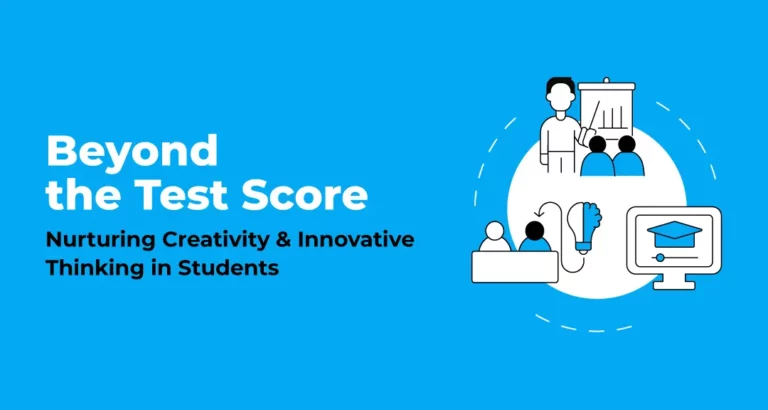Critical Thinking: The Key to Success in the 21st Century
- Parenting, Teaching
- December 21, 2024
- VOLT Learning

Critical thinking is not a skill; it is a way of life. It equips the student to look at situations critically, to make decisions intelligently, and to find solutions for problems creatively. A wonderful ideal, but let’s face it: most kids can barely remember to tie their shoelaces, much less “navigate uncertainties” or “adapt to diverse perspectives.
And while it is nice to picture students analyzing trends or addressing world issues, perhaps we should not overstate the school day.
The concept of the ‘transformative effects’ of critical thinking, however is not easy to understand in the face of such problems as forgetting one’s locker combination or coping with group projects where one individual takes all the work..
Sure, critical thinking is essential, but this sounds more like asking it to take all the burdens of the 21st century on its metaphorical shoulders.
Maybe let it have a break between this global innovation and academic brilliance?
Critical Thinking Activities for Kids: Four Steps Exercise to Execute
Inside the classroom and even at home too, there are many circumstances to engage students so that they may think smarter and act wiser. Here’s how teachers and parents (as one team) can facilitate their critical thinking:
1. Let them Inquire
Critical thinking starts with curiosity. Students are made to ask questions for the problem. Why is it? Do the facts actually happen? What are the underlying assumptions? They end up getting involved in the cool process of observation, analysis of reasoning, and finding gaps in knowledge. This further encourages the students to question the given ideas and to seek alternative ideas critically.
2. Don’t let them compromise on Imagination
Imagination is the ignition of creativity in problem solving. Students learn best when they can see things from different angles, weigh alternative solutions, and expand their knowledge base. This process enables them to identify strengths and weaknesses in evidence, arguments, or assumptions, which will help them be open-minded.
3. Don’t be afraid and let them Create
The crux of critical thinking is developing a well-supported stand or remedy. It begins with encouraging the students to examine complicated matters, and once they derive well-balanced and sound arguments, they don’t only boost their ability to reason effectively but also find it feasible to justify their points.
4. Reflect or Evaluate is the hallmark of a critical thinker
When students are part of the self-evaluating process of one’s position, they often end up acknowledging that they don’t know everything and keep an open mind to competing ideas. This process cultivates humility and intellectual honesty, essential qualities for an increasingly interdependent world.
The Quick Way to Making Critical Thinking Fun: Interactive Books
Many teachers and parents experience being caught in stress through which they are unable to ensure critical thinking becomes effective to students. Well, this can be done well using interactive books that input reason, creativity, as well as teamwork into practical learning.
It really unlocks a pandora box of learning, and it gives the student the opportunity to think critically by letting him go beyond passive reading. In the interactive book, students get engaged with stories, quizzes, and activities that challenge them to question things and seek answers.
This inquiry-based approach sharpens their ability to analyze and evaluate information rather than just accept it at face value. and engaging them in active exploration
One standout resource is VOLT’s Thinking Skills, a NEP aligned reasoning and aptitude book designed to build reasoning and aptitude in school students. What Makes Thinking Skills a Game-Changer?
Well, this book gives the students knowledge to excel not only academically but professionally as well by offering:
- Engaging Narratives: Involving stories that lead to the introduction of complex ideas.
- Interactive Video Lessons: Videos that are dynamic to explain topics.
- Brain Booster Quizzes: HOTS-based quizzes for testing reasoning and application.
- Reason and Assertion Sheets: Encouraging logical analysis through worksheets.
- Activity-Based Learning Material: Making learning fun and practical by means of hands-on activities.
- Assessment Sheets: A tool for teachers for evaluating students’ progress in an effective manner.
It does just that, this is the best book for reasoning and aptitude for school children as it challenges students’ thought process through puzzles, reasonability challenges, and scenario-based questions. Also, it ensures a hands-on learning experience in the open-ended activities or “choose-your-path” scenarios to connect abstract ideas with real-world applications.
Ready to Transform Learning with VOLT Thinking Skills?
Critical thinking is not a skill; it is a mindset for tomorrow’s leaders. This ability, if nurtured in students, will help them achieve academic success, personal growth, and professional achievements.
VOLT’s Thinking Skills helps students begin a journey of curiosity, creativity, and critical analysis. This NEP-aligned book transforms learning through interactive content and activity-based methods to make critical thinking accessible and fun.
Equip your students to think smarter and succeed brighter. Explore VOLT’s Thinking Skills today and power the next generation with the key to 21st-century success!



